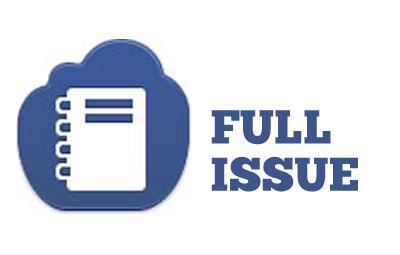 NEWS: Lawmakers take a deep-dive into affordable housing
NEWS: Lawmakers take a deep-dive into affordable housing
BRIEFS: Lawmakers mum about veto-override session, Hollings, beer, and more
COMMENTARY, Brack: When something named “liberal” really isn’t
SPOTLIGHT: S.C. Hospital Association
MY TURN, Brogdon: A restructured Santee Cooper offers best value to customers, state
FEEDBACK: Send in your thoughts
MYSTERY PHOTO: This one could be tough
S.C. ENCYCLOPEDIA: South Carolina during World War II
NEWSBIG STORY: Lawmakers take a deep-dive into affordable housing
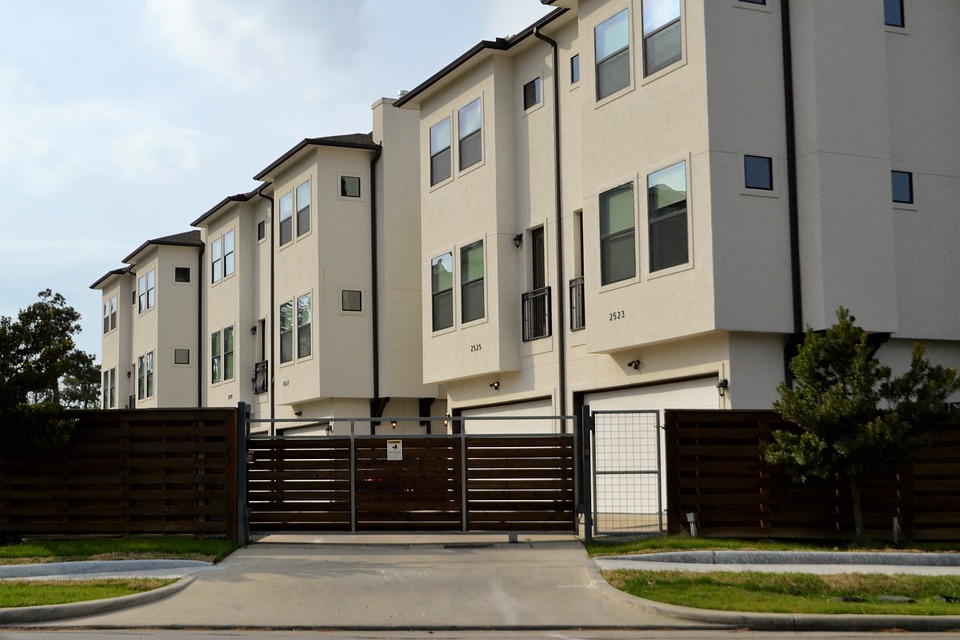
By Lindsay Street, Statehouse correspondent | As South Carolina lawmakers embark on an efficacy audit of the state agency charged with helping residents to secure housing, that agency is wrapping up its first affordable housing needs-assessment in 17 years.
Since the S.C. State House Finance and Development Authority, known as SC Housing, last reviewed housing needs in the state, the state’s population has grown by nearly 1 million people.
Never heard of SC Housing? You’re not alone. The little-known state agency offers housing loans and administers federal incentives for affordable housing. In the wake of the 2008 recession, it became best known for SC Help, a program that administers federal aid to homeowners facing foreclosure.
The S.C. House Legislative Oversight Committee will begin its review of SC Housing with a public hearing 10 a.m. July 22 at a location to be determined. The review is part of the committee’s mission of evaluating efficiency and effectiveness of state agencies.
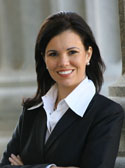

S.C. Rep. Mandy Powers Norrell, D-Lancaster, who serves on the subcommittee told Statehouse Report she is “reserving judgment” about SC Housing, but added there were “some concerns” without elaborating.
Rep. Bill Hixon, a North Augusta Republican who chairs the subcommittee, did not offer a view of the agency’s management, but said he is looking forward to the review.
“I’m going to learn as much about them as I can,” Hixon said.
Another lawmaker on the subcommittee, North Charleston Democratic Rep. Marvin Pendarvis, said he has heard “rumblings” of mismanagement at the agency, but he has “not heard any reason to believe SC Housing should be under any additional scrutiny outside of the normal legislative process.”
Affordable housing is ‘a national crisis’
The growing problem of affordable housing made little headway at the state level during the 2019 legislative session.

Pendarvis co-sponsored a bill (H. 3998), which passed the House, that seeks incentives for workforce and senior affordable housing. It is now being reviewed by the Senate Finance Committee. He also sponsored a bill (H. 3091) aimed at offering housing incentives to developers, but it has languished in a House committee.
“It’s a national crisis and it’s affected South Carolina in a very real way. If we don’t do anything about it, we will see parts of our economy be affected by it,” Pendarvis said.
According to a March article from Pew Trusts, places like Lee, Williamsburg, Beaufort, Jasper and Marion counties have more than 15 percent of residents paying at least half their income for housing. In Charleston County, it is 17.2 percent, among the highest in the state.
“We know there is a need. You only have to look as far as Charleston to see what’s going on there. They are approaching a full-blown economic crisis in the tourism industry,” SC Housing spokesman Clayton Ingram said, adding that people can’t park or live within a reasonable distance of their work.
Pendarvis said the issue has grown so large, it’s caught the attention of 2020 presidential candidates.
It’s been 17 years since an assessment of the state’s housing needs has been completed. The 2002 SC Housing needs-assessment study looked at nine housing factors among all 46 counties, including how many households are spending 30 to 50 percent of their income on housing. According to the pre-recession report, about 15 percent of the state’s severely cost-burdened renter households were in Charleston County, which remains a focus of affordable housing issues today.
Ingram said the hope of the new study is to provide the agency with better “empirical data” about the crisis. John Tyler, SC Housing’s director of housing initiatives and innovation, said there is no timeline for when the report will be released, but he said it was a matter of “months, not years.”
What SC Housing does
The lawmakers on the agency review subcommittee said they are boning up on what the agency does before the public hearing in July.
 In addition to acting as an administrator for SC Help, SC Housing mainly acts as a mortgage bank, offering low-interest loans and helping with down payments, members of its staff said. The agency also works with developers to get federal funding for housing projects. The agency does not own any properties, and it is not an umbrella agency for housing authorities in the state, though it does administer Section 8 housing vouchers in seven counties.
In addition to acting as an administrator for SC Help, SC Housing mainly acts as a mortgage bank, offering low-interest loans and helping with down payments, members of its staff said. The agency also works with developers to get federal funding for housing projects. The agency does not own any properties, and it is not an umbrella agency for housing authorities in the state, though it does administer Section 8 housing vouchers in seven counties.
In the 2019-2020 fiscal year, the agency is projected to spend about $209 million total, but none of those dollars come from the state’s general fund. Staff did not disclose how much federal money is a part of that budget, saying that the “self-sustaining” budget is mostly funded by bond sales and interest rates.
“(Federal funding is) a moving target,” Ingram said. That’s because the agency may not do any projects within a federal program every year, he said. For example, its programs aimed at helping curb neighborhood blight are not currently ongoing, while a federal housing tax credit wasn’t a part of last year’s SC Housing budget, but is now a part of this year’s budget.
Norrell said she suspects some “disorganization” at the agency, especially when it comes to the its role as a “pass-through” for federal programs.
Tyler said that in his nine months at the agency, he has not seen a culture of mismanagement or disorganization.
“We know we have room for improvement and I think we can continue to improve internally by consistently examining the work we do,” he said. “(But) with all due respect, the audited financial statements of this agency … speak for themselves.”
The agency’s former board chair Donald Tomlin Jr. said the agency is “a great team.” On the question of whether the agency has a mismanagement issue, he responded:
“There’s always a tension between those who want the federal tax credits and the agency that has to administer the federal tax credit program to try their very best to equitably distribute tax credits to low-income housing producers,” he said.
A phone call to the current board chair, Robert Mettle, went unanswered.
Ahead on affordable housing
As the state awaits the needs-assessment report and SC Housing is audited, lawmakers have at least two affordable housing bills in committees to ponder before January’s return to session.
Tyler said H. 3998, the Workforce and Senior Affordable Housing Act, would be a boon to making housing more affordable.
“That would be a great step into providing additional sources for financing for affordable housing for the state,” he said.
Pendarvis said he is urging his colleagues to act on affordable housing sooner rather than later.
“The state has to recognize there is a problem and once it recognizes the problem, we will look to the agencies we have,” he said. “The state should be in the business of trying to increase the supply of affordable housing.”
- Have a comment? Send to: feedback@statehousereport.com
Lawmakers mum about veto-override session. Hollings, beer, more
UPDATED, 6/11/19: By Lindsay Street, Statehouse correspondent | Key lawmakers aren’t saying why they are returning for a special June 25 session, but something in Gov. Henry McMaster’s budget vetoes breached the threshold of importance for them to reconvene.
![]() After gubernatorial vetoes in 2017, lawmakers let the decision whether to override sit for eight months on funding of additional school buses.
After gubernatorial vetoes in 2017, lawmakers let the decision whether to override sit for eight months on funding of additional school buses.
“There’s a couple things that need to be done,” S.C. Sen. Paul Campbell, R-Charleston, said. “It’s not about special projects. It’s to look at the vetoes.”
The announcement for the special session comes a week after Senate President Harvey Peeler, R-Cherokee, said there would be no special summer for education reform.
House Speaker Jay Lucas’ media liaison Haley Mottel did not return a request to comment for this story. [Clarification: The previous sentence was stricken because it was incorrect.]
The House will take up the budget vetoes first. It is expected to take them only a few hours to get through the overrides before it turns matters over to the Senate. By tradition, the state budget originates in the House.
Lead House budget writer Rep. Murrell Smith, R-Sumter, also did not return a request to comment.
- According to The Nerve, special sessions have been used in the past to push controversial pieces of legislation in Columbia. Read the story here.
The 28 line items struck by Gov. Henry McMaster last week were mostly earmarks for local projects. McMaster cited lack of transparency and a need for the earmarks to go through the regular vetting in the budget process.
One of the earmarks was for funding the sinking of the submarine Clamagore off the coast of Charleston.
In other news:
Charleston airport building to don Hollings’ name. In the next 60 days, the Charleston International Airport’s terminal building will carry the name of the late U.S. Sen. Fritz Hollings. S.C. Sen. Paul Campbell, R-Charleston, said its a similar honor that was bestowed for U.S. Sen. John McCain. R-Ariz.. Campbell said the design for the sign has been put together and it will be erected “before the end of summer.”
S.C. has high beer tax. The Tax Foundation released a report on state beer taxes, and listed South Carolina as the fifth highest in the nation at 77 cents per gallon. The report calls taxes “the single most expensive ingredient in beer” and that they can account for 40 percent of the retail price of beer. Read the report.
S.C. regulator recognized for ‘shaking things up.’ Public Service Commissioner Tom Ervin has been listed among regulators who are transforming the energy market in the country. The list noted that Ervin, who began his post in 2018, is working in a critical time in South Carolina as it handles the billions of dollars in costs from an abandoned nuclear construction project. Read more.
Rain on the way to withering S.C. crops. The S.C. Drought Response Committee met Thursday and elevated three-quarters of S.C. counties to a “moderate drought,” but they said they will meet again next week to evaluate conditions after rain that is forecasted for this weekend.
2020 candidate calendar
Throughout the campaign season, we are working to keep South Carolina informed of candidate events in the state. Have an event you want us to know about? Email us at 2020news@statehousereport.com. In the coming days:
- Harris: U.S. Sen. Kamala Harris, D-Calif., will attend the SC NAACP Freedom Fund Celebration 6 p.m. June 8 at Brookland Baptist Banquet & Conference Center in West Columbia.
- O’Rourke: Former Texas Congressman Beto O’Rourke will spend three days in South Carolina next week. On June 14,, O’Rourke will host a town hall with the Gullah Geechee Nation and, on June 15, he will host a criminal justice town hall in North Charleston. On June 16, O’Rourke is scheduled to attend church services in Spartanburg followed by a town hall in Greenville. None of the events have disclosed locations yet.
- On TV: The Black Economic Alliance will host a presidential forum noon to 4 p.m. June 15 for some Democratic candidates at the Charleston Music Hall. Candidates U.S. Sen. Cory Booker of New Jersey, South Bend Mayor Pete Buttigieg, former Texas Congressman Beto O’Rourke and U.S. Sen. Elizabeth Warren of Massachusetts have confirmed. Tickets required, but free. To be aired on BET.
- Hear from 18 of the Democratic candidates. On June 22, the S.C. Democratic Party will have its annual state convention. Nineteen of the 23 declared Democratic presidential hopefuls are signed up to speak. Read more.
Looking ahead
Click below for other items coming up in the Statehouse:
Find any bill
- Have a comment? Send to: feedback@statehousereport.com
BRACK: When something named “liberal” really isn’t
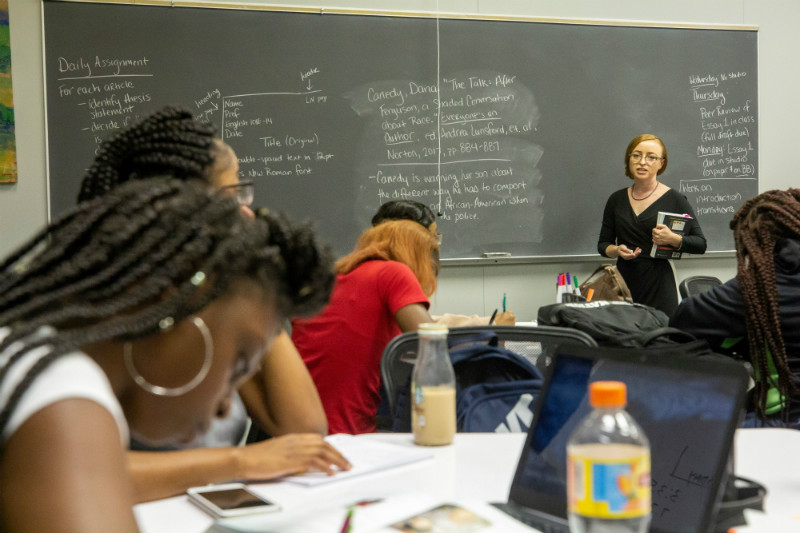
By Andy Brack, editor and publisher | Millions of American students attending college for a classic liberal arts education don’t sit around watching MSNBC, attending Democratic Party meetings or reading The New York Times.
Unfortunately, the word “liberal” in the three-word educational phrase has morphed into a pejorative term, often leading to misunderstandings for what’s intended to describe a broad-based education that expands how students understand and relate to the world.
“The word ‘liberal’ has become a political lightning rod, but a liberal arts education has nothing to do with left-leaning politics,” said Gibbs Knotts, interim dean of the School of Humanities and Social Sciences at the College of Charleston. “A liberal arts education prepares students to be better communicators, both orally and in writing. It exposes students to a wide range of disciplines in the humanities and social sciences, as well as in the arts and natural sciences.”
Winthrop University President Dan Mahony concurred, noting liberal arts education has nothing to do with being politically liberal or encouraging students to be more liberal politically.
“I would define a liberal arts education as one that is well-rounded and provides students with knowledge and skills across a variety of areas,” he said. “At its core, it focuses on developing a number of important skills including oral and written communication skills, problem solving skills, critical thinking skills, numerical skills, and many others.”
Mahony said he was a good example of why a well-rounded education was important. Throughout college, he trained as an accountant. After college, he lasted as an accountant for 13 months.
“I found the liberal arts aspect of my undergraduate education to be particularly useful to me as I moved through about three other careers and I appreciated that my institution required me to take a lot of liberal arts courses, including seven English courses — a lot for most accounting majors.”
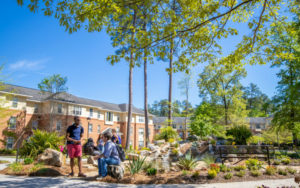
Colleges and universities often offer two tracks – the broad curriculum of study highlighted by Knotts and Mahony and more specific study of a professional discipline to develop a deep competency in a skill, such as engineering, But even undergraduate students who focus on courses to get into medical or law school generally are required to take broader courses in English, social sciences and math to ensure they get more of a well-rounded, or liberal arts, education.
“A liberal arts education accommodates a curriculum which encompasses the arts, the natural and social sciences, humanities, philosophy, religion, literature, and languages,” said Francis Marion University President Fred Carter. “Of course, the finest liberal arts education doesn’t simply promote a curriculum, it inspires the independent and lifelong exploration of the knowledge it inspires.”
And Carter should know. He’s not the stereotype of a politically liberal college president. In fact, he served as a major policy adviser for GOP Gov. Carroll Campbell and chief of staff to GOP Gov. Mark Sanford. In between, he ran the old State Budget and Control Board during the tenure of Campbell and another Republican governor, David Beasley.
A broad, deep, liberal arts education, he says, helps political conservatives as well as those who are more liberal.
“Why would anyone even choose an ideology without a full understanding of the range of options and their implications for living a thoughtful and satisfying life?” he asked rhetorically. “And how could one possibly defend opinions without understanding the underpinnings upon which they’re built?”
For those in the education field, there’s not really an accepted synonym for the “liberal” part of the term “liberal arts education,” noted Mike Lefever, interim president and executive director of the state Commission on Higher Education.
“We don’t really say an ‘expansive arts’ or ‘comprehensive arts’ or ‘broad-based arts education,’” Lefever said. “If there is an alternative, talking generally about the benefits of arts and sciences may appeal to some, but there is always the need to define what exactly is ‘arts.’
“You would think that the really smart folks in the academy would have figured this out.”
So when we consider liberal arts education in a society where everything is more polarized, let’s remember we’re talking about educating students to think broadly and consider alternatives, not join a political party.
- Andy Brack’s new book, “We Can Do Better, South Carolina,” is now available in paperback via Amazon.
- Have a comment? Send to: feedback@statehousereport.com.
SPOTLIGHT: S.C. Hospital Association
 The public spiritedness of our underwriters allows us to bring Statehouse Report to you at no cost. This week’s spotlighted underwriter is the South Carolina Hospital Association, the Palmetto State’s foremost advocate on healthcare issues affecting South Carolinians. The mission of SCHA is to support its members in addressing the healthcare needs of South Carolina through advocacy, education, networking and regulatory assistance.
The public spiritedness of our underwriters allows us to bring Statehouse Report to you at no cost. This week’s spotlighted underwriter is the South Carolina Hospital Association, the Palmetto State’s foremost advocate on healthcare issues affecting South Carolinians. The mission of SCHA is to support its members in addressing the healthcare needs of South Carolina through advocacy, education, networking and regulatory assistance.
Founded in 1921, the South Carolina Hospital Association is the leadership organization and principal advocate for the state’s hospitals and health care systems. Based in Columbia, SCHA works with its members to improve access, quality and cost-effectiveness of health care for all South Carolinians. The state’s hospitals and health care systems employ more than 70,000 persons statewide. SCHA’s credo: We are stronger together than apart.
- To learn more about SCHA and its mission, go to: http://www.scha.org.
BROGDON: A restructured Santee Cooper offers best value to customers, state
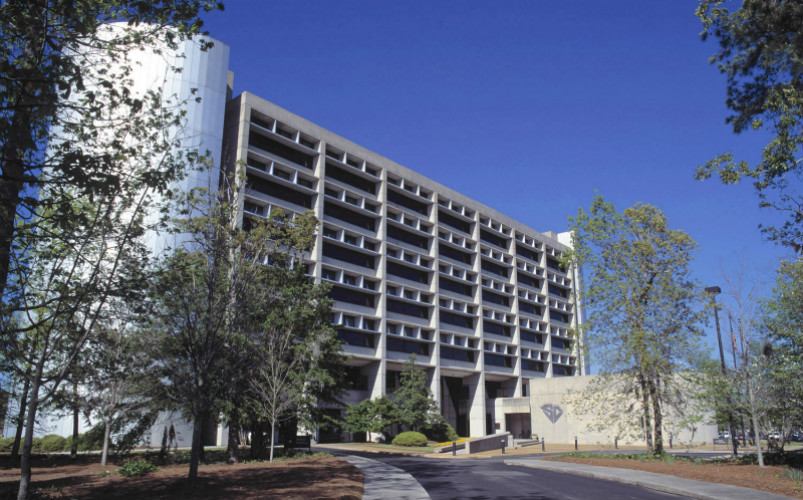
By Jim Brogdon, special to Statehouse Report | Nearly two years have passed since Westinghouse Electric Co. declared bankruptcy and effectively rejected its contract to build two new nuclear reactors at V.C. Summer, exposing our customers to previously unknown and skyrocketing construction costs and thus causing Santee Cooper to suspend the project.
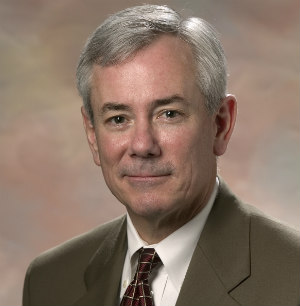
After nearly two years of evaluation, the S.C. General Assembly just approved a process for private, shareholder-owned companies to submit bids to purchase Santee Cooper or to take over its management. Also under that directive, Santee Cooper is developing a proposal to remain a state agency, with restructuring and process changes but still focused on what is best for customers and the people of South Carolina.
Over the past 85 years, Santee Cooper has provided reliable, low-cost electricity to customers across the state, directly and indirectly through wholesale distributors. Your state-owned utility has also led South Carolina by being the first utility in the state in developing renewable energy generation, in providing energy efficiency programs, in creating jobs and capital investment through economic development programs, in providing public drinking water to several localities, and in installing environmental control technology on fossil fuel generation.
Looking forward, from the board to frontline employees, we believe a restructured Santee Cooper offers the best value to customers and the state. Now is the time to prove it, and the hard work is underway.
There is legitimate frustration and concern regarding the impact of the V.C. Summer project. We accept responsibility for that. We have a plan to address the remaining nuclear debt and at the same time maintain competitive rates and solid financial metrics for Santee Cooper – both of which are important to customers.
Over time, Santee Cooper borrowed approximately $4 billion for the nuclear project, and in July 2017 had a total debt of about $8 billion, with the remainder related to building other generating units, transmission upgrades and projects that deliver low-cost, reliable electricity day in and day out to nearly 2 million South Carolinians. Public power utilities can issue tax-exempt debt, which is a very low-cost way to build big projects and pay them off over the life of the assets – over decades, actually. Santee Cooper’s debt level is in line with other large public power utilities, and debt management is one reason Santee Cooper’s residential customers have the lowest monthly bills among all large utilities in South Carolina (based on the typical residential bill of 1,000 kilowatt-hours per month).
 Santee Cooper has paid off nearly $1 billion of that debt, which now stands at approximately $7.2 billion. The debt reduction came through cutting budgets to help delay the need for rate increases, optimizing a nearly $900-million settlement with Toshiba (Westinghouse’s parent) to produce approximately $1.4 billion in aggregate savings to customers, and reducing annual fuel costs by approximately $150 million since 2014.
Santee Cooper has paid off nearly $1 billion of that debt, which now stands at approximately $7.2 billion. The debt reduction came through cutting budgets to help delay the need for rate increases, optimizing a nearly $900-million settlement with Toshiba (Westinghouse’s parent) to produce approximately $1.4 billion in aggregate savings to customers, and reducing annual fuel costs by approximately $150 million since 2014.
We also continue to maintain A-rated credit from all three major credit agencies, and to keep customer bills low. Existing rates provide revenue that is paying down the non-nuclear debt. Santee Cooper has already increased rates an average 5 percent since 2009 for the nuclear project, and project to gradually increase rates another 7 percent over several years to provide revenue that will finish paying off the nuclear debt – all while maintaining competitive rates.
That’s the existing plan, and we are looking for other measures that further improve efficiency. The outcome is yet to be determined, but Santee Cooper customers and the state will benefit from the hard work and incredible talent our employees put into the process. Santee Cooper is competing with shareholder-owned utilities to see who can provide the greatest value to our customers and the state, and we are grateful to the legislature for establishing a process that will allow a fair and objective comparison.
Jim Brogdon is interim president and CEO of Santee Cooper.
- Have a comment? Send to: feedback@statehousereport.com..
FEEDBACK
Send us your thoughts … or rants
![]() We love hearing from our readers and encourage you to share your opinions. But you’ve got to provide us with contact information so we can verify your letters. Letters to the editor are published weekly. We reserve the right to edit for length and clarity. Comments are limited to 250 words or less. Please include your name and contact information.
We love hearing from our readers and encourage you to share your opinions. But you’ve got to provide us with contact information so we can verify your letters. Letters to the editor are published weekly. We reserve the right to edit for length and clarity. Comments are limited to 250 words or less. Please include your name and contact information.
- Send your letters or comments to: feedback@statehousereport.com
This one could be tough
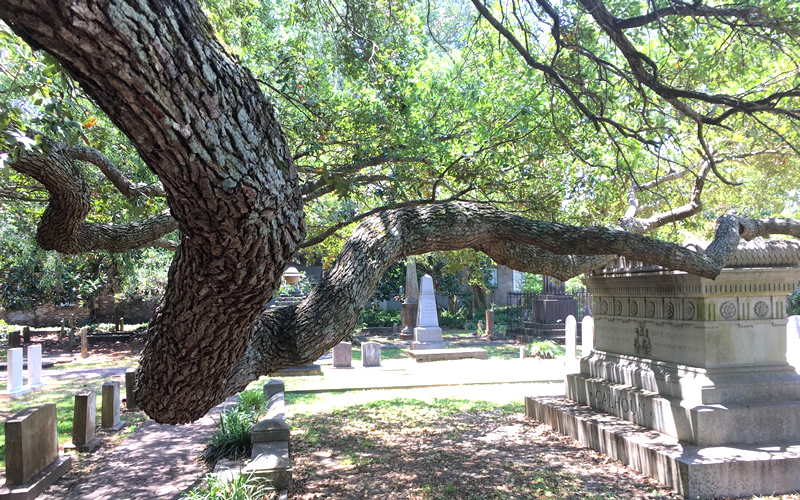
There’s a pretty good clue in this photo that will suggest where it was taken in South Carolina, but if you don’t see it, this mystery photo could be pretty tough. For extra credit, tell us what’s important historically in the photo. Send your guess about the location of this photo to feedback@statehousereport.com. And don’t forget to include your name and the town in which you live.
Our previous Mystery Photo
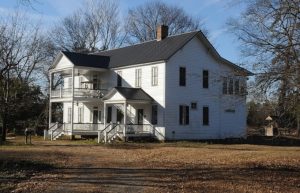 The subject of our May 31 mystery, “Two-story house,” is a Pee Dee gem known as Blooming Grove in Florence County, but most readers didn’t seem to know about it. Congratulations to three who correctly identified the Classical Revival house: George Graf of Palmyra, Va.; Bill Segars of nearby Darlington; and Jay Altman of Columbia.
The subject of our May 31 mystery, “Two-story house,” is a Pee Dee gem known as Blooming Grove in Florence County, but most readers didn’t seem to know about it. Congratulations to three who correctly identified the Classical Revival house: George Graf of Palmyra, Va.; Bill Segars of nearby Darlington; and Jay Altman of Columbia.
Altman added that according to the National Register of Historic Places, “the plantation, built in 1790, is significant for its architecture, Early Classic Revival. The NRHP also cites the significance of one of its owners, Frank Mandeville Rogers, 1857-1945, for his efforts to promote the growing of Bright Leaf tobacco in South Carolina.”
Graf shared that according to piglix.com, “Blooming Grove, also known as the Mandeville-Rogers House, is a historic plantation house located near Florence (in) Florence County, S.C. It was originally constructed about 1790, with a two-story addition built between 1800 and 1820. It is an I-house form dwelling, with an Early Classical Revival two-story portico.”
- Send us a mystery: If you have a photo that you believe will stump readers, send it along (but make sure to tell us what it is because it may stump us too!) Send to: feedback@statehousereport.com and mark it as a photo submission. Thanks.
S.C. ENCYCLOPEDIA
HISTORY: South Carolina during World War II

Editor’s Note: With the nation recalling the sacrifice and heroism of those who stormed French beaches 75 years ago on D-Day, we thought it was a good time to remember how South Carolina participated in the war.
S.C. Encyclopedia | Prior to the entry of the United States into World War II, the depressed South Carolina economy had already started to recover. Federal money constructed or expanded military and naval installations across the state, including Camp Croft in Spartanburg, Fort Jackson in Columbia, the Charleston Navy Yard, and several smaller bases. Economic expansion centered in major urban centers. Large population increases occurred during the war years in Charleston County (33 percent), Richland County (11 percent), and Greenville County (3 percent). But South Carolina’s total population changed little from 1940 to 1944, remaining about 1,890,000. While thousands left the state for military duty or jobs in other states, an equal number of outsiders came to South Carolina.
The war brought a much-needed boost to South Carolina’s agricultural sector, which had struggled since the early 1920s. Agricultural wages in the state more than doubled between 1939 and 1943 as state farmers tried to keep up with war-time demands for cotton and produce. Despite the dramatic increase, farm wages in South Carolina still lagged behind those in the rest of the country, and many farmers faced significant labor shortages. These shortages were partially alleviated by employing German prisoners of war (POWs) on farms in such counties as Aiken, Greenwood, and Marlboro. Seasonal camps of from two hundred to four hundred POWs were constructed in these and other counties between 1943 and 1945, with a central camp for nearly two thousand prisoners placed at Fort Jackson in 1944.
In the textile industry, increases in production and the labor force occurred as manufacturers successfully met war-time production goals. Cotton consumption by textile mills increased more than 60 percent between 1939 and 1943. But heavy war industries, such as aircraft plants in Georgia and weapons plants in North Carolina, did not exist in South Carolina. The closest to such industries in the state was the Charleston Navy Yard, which produced more than three hundred medium-size and small vessels while repairing numerous others. Aiding the yard were small steelworks, such as Kline Iron and Steel in Columbia and Carolina Industries of Sumter, which built ship components and then delivered them to Charleston for assembly. Military bases across the state also gave employment to civilians, who provided services, repairs, and construction expertise.
Estimates are imprecise, but at least 900,000 men received military training in South Carolina during the war. More than 180,000 South Carolinians, including 2,500 women, entered the armed services. More were willing to serve, but forty-one percent of those examined statewide were rejected for various mental or physical problems, making the recruit rejection rate in South Carolina the second highest in the nation. Civilian defense began to organize in South Carolina more than a year before Pearl Harbor. By summer 1941, the State Council of Defense was soliciting 12,500 aircraft spotters for eight hundred posts across South Carolina. In the last months of the war, the council claimed that more than 250,000 South Carolinians had volunteered for duties ranging from serving as nurses’ aides and salvage workers to providing war bond activities and aircraft spotting.
South Carolinians contributed to the war effort in other ways as well, especially through rationing. Tire rationing began less than a month after Pearl Harbor, with just 2,921 tires allotted the entire state for January 1942. Six months later, gas rationing began on the East Coast, and many in South Carolina grumbled about bearing the brunt of this war measure. By 1943, the entire nation was under the same restrictions. This system reduced gas consumption for private cars to between three and four gallons every two weeks for the remainder of the war. In March 1943, nationwide food rationing began. Under the mandatory system coordinated through the federal Office of Price Administration, all canned and processed foods were severely rationed, as were red meat, sugar, and coffee. Foods exempted by the rationing board were fresh vegetables and fruits as well as seafood. Victory gardens were successfully promoted in cities and towns to supplement family needs, so that by 1943 more than 330,000 plots were reported across the state.
With housing rents rising even before Pearl Harbor, many cities and towns had to impose rent controls early in the war. While Columbia imposed them less than a year after the Japanese attack, the housing shortage in Charleston became so acute by 1940 that the navy established a city clearinghouse. This helped, but housing remained scarce and complaints grew that local landlords and residents were gouging the public. The housing shortage along with problems in food distribution and labor needs forced the federal government to list Charleston as one of eighteen cities in the nation considered Congested Production Areas that needed special assistance. Greenville and Spartanburg also faced shortages, but to a lesser degree.
Amid war-time conditions, segregation laws came under pressure. The influx of non–South Carolinians with different ideas on social customs led to temporary changes, especially on military bases. Nevertheless, African Americans remained at the bottom rung of the social ladder. Although some minorities gained promotions to skilled jobs, most of these went to recent arrivals. Segregated United Service Organizations, restaurants, and movie houses remained standard throughout the war. When reports reached South Carolina congressmen about “violations” of southern traditions on military installations, those congressmen did not hesitate to protest. U.S. Senator Burnet Maybank wrote a strong objection to the captain of the Charleston Navy Yard after a constituent protested that blacks were working alongside whites and that some minorities were getting promotions above whites.
Although segregation would remain entrenched in the early postwar period, seeds of change were planted during the war, particularly through landmark court decisions. In 1944 the federal district court ordered South Carolina to provide equal salaries to black and white teachers. In the same year, in the case of Smith v. Allright, the U.S. Supreme Court ruled the all-white primary unconstitutional. Politicians in the state, led by Governor Olin D. Johnston, fought these and subsequent court rulings, but African Americans in South Carolina were slowly but steadily gaining voting rights by the end of the war. Between 1940 and 1946, the number of registered African American voters in the state increased from 1,500 to 50,000.
As the war ended, most white South Carolinians expected prewar social customs to remain. These hopes were mixed with fears of an economic depression like the one that followed World War I. Fortunately, although some military bases closed and others downsized, the GI Bill helped maintain a strong economy by providing low-interest loans and free education to former servicemen. Thousands of veterans entered the University of South Carolina and other state schools in the immediate postwar years. As the cold war accelerated by the early 1950s, several bases on the verge of closing gained new life and expanded as the nation retooled to confront the threat of global communism.
— Excerpted from an entry by Fritz Hamer. This entry may not have been updated since 2006. To read more about this or 2,000 other entries about South Carolina, check out The South Carolina Encyclopedia, published in 2006 by USC Press. (Information used by permission.)
Now available in paperbrack, err, paperback
 Now you can get a copy of editor and publisher Andy Brack’s We Can Do Better, South Carolina! ($14.99) as a paperback.
Now you can get a copy of editor and publisher Andy Brack’s We Can Do Better, South Carolina! ($14.99) as a paperback.
The book of essays offers incisive commentaries by editor and publisher Andy Brack on the American South, the common good and interesting South Carolina leaders, such as former U.S. Sen. Fritz Hollings, civil rights advocate Septima Clark, former S.C. Gov. David Beasley and more. There also are discussions on civil rights struggles with which the Palmetto State continues to grapple. as well as commentaries on politics, governments, the hangovers of South Carolina’s past and her future opportunities.
We Can Do Better, South Carolina! is also available exclusively as a Kindle book for $7.99. Click here to purchase a Kindle copy.
- If you have a comment or questions about the book, please let us know at: feedback@statehousereport.com.
ABOUT STATEHOUSE REPORT
Statehouse Report, founded in 2001 as a weekly legislative forecast that informs readers about what is going to happen in South Carolina politics and policy, is provided to you at no charge every Friday.
- Editor and publisher: Andy Brack, 843.670.3996
- Statehouse correspondent: Lindsay Street
More
- Mailing address: Send inquiries by mail to: P.O. Box 22261, Charleston, SC 29407
- Subscriptions are free: Click to subscribe.
- We hope you’ll keep receiving the great news and information from Statehouse Report, but if you need to unsubscribe, go to the bottom of the weekly email issue and follow the instructions.
- © 2019, Statehouse Report. All rights reserved.















